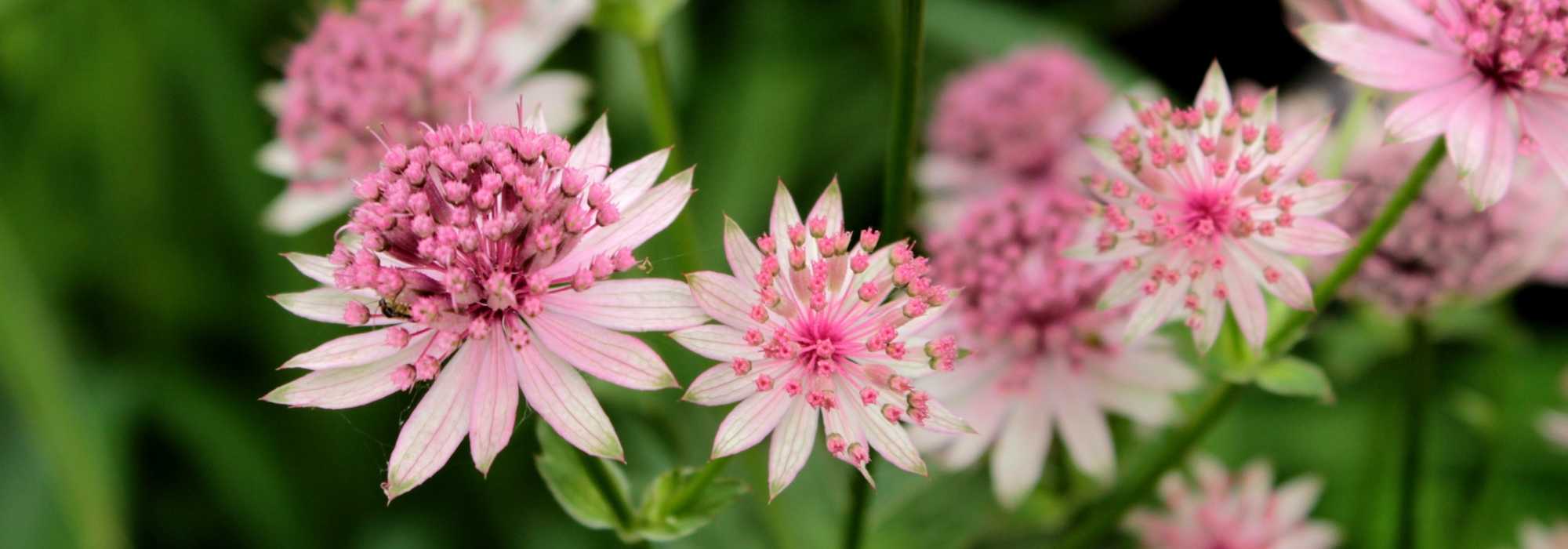
Astrantia : 8 ideas for pairing with other plants
in garden borders
Contents
Typical of cool rockeries, English ‘mixed borders’ and cottage gardens, Astrance is also widely used by landscapers favouring meadow-style planting, paired with grasses.
Its free habit and slightly muted colours allow for endless creativity without risking a false note. It pairs well in almost every type of bed, except perhaps traditional French formal gardens, too strict for its rather wild habit.
Give free rein to your creativity, favouring the pastel colour combinations, white/pink, white/blue, pink/blue, which always work.
Darker varieties such as Hadspen Blood allow for more contrasting combinations, with dark green or purplish foliage, for example.
Brighten a shady border in summer
Astrantia is often used to add colour, throughout summer, to a slightly ternate semi‑shade border, surrounded by ferns, brunneras or hostas, for example. Their flowering brightens these rather dull areas throughout summer. Choose white or pink varieties to add light; dare to use red varieties to provide contrast, especially among purple or dark foliage.
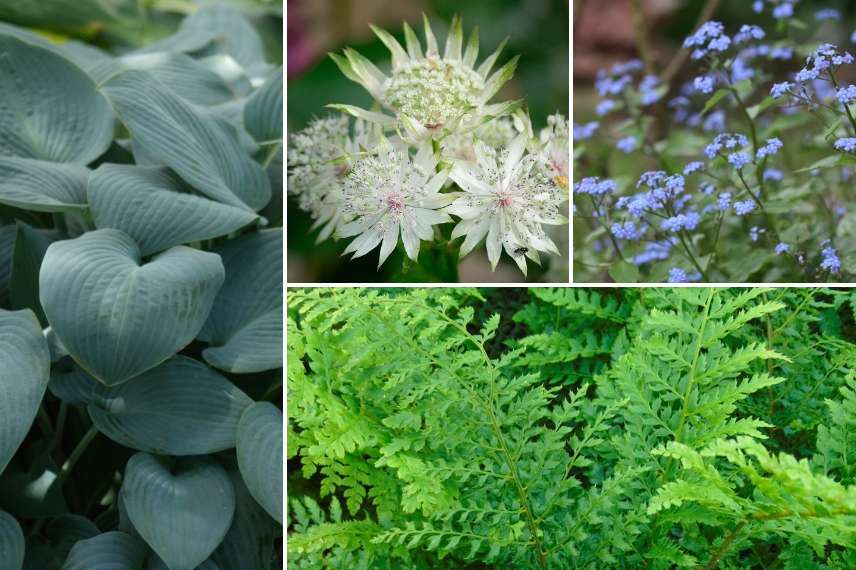
Example of a shade pairing: Hosta tardiana ‘Halcyon’, Astrantia major ‘White Giant’, Brunnera macrophylla ‘Jack Frost’ and Polystichum setiferum ‘Proliferum’
To brighten a dark hedge
Few things are sadder than a dark hedge cutting a straight line across the garden… Astrances will bring a little softness and lightness, in an environment that suits them perfectly: they grow naturally in light partial shade, at the edge of a forest!
The effect works best when planted en masse. To spare your bank manager a shock, consider sowing seeds if you’re used to stratifying… or patiently divide your plants every two years.
→ For all you need to know about sowing and dividing Astrances, visit our plant page.
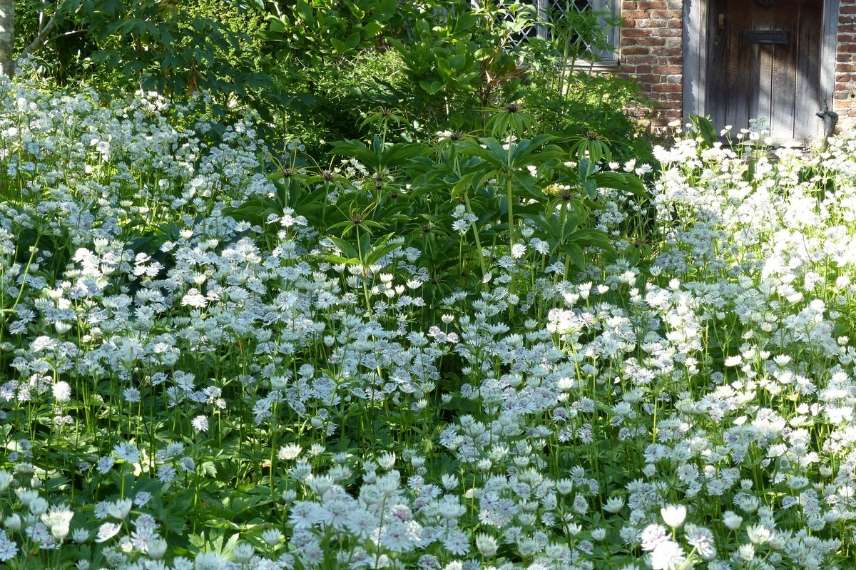
A sea of Astrances bright in front of a hedge!
Discover other Astrantia - Masterwort
View all →Available in 0 sizes
Available in 0 sizes
Available in 2 sizes
Available in 3 sizes
Available in 0 sizes
Available in 1 sizes
Available in 2 sizes
Available in 2 sizes
Available in 2 sizes
Available in 2 sizes
To conceal an unsightly base on a tall specimen
Astrantia is perfect in the foreground of medium-sized bushes or climbing plants : it complements and elegantly hides a slightly bare base of a rose, a clematis or a hydrangea. Generally, a single plant is enough to ensure an elegant foreground. This lets you create endless harmonies in shades of white and pink.
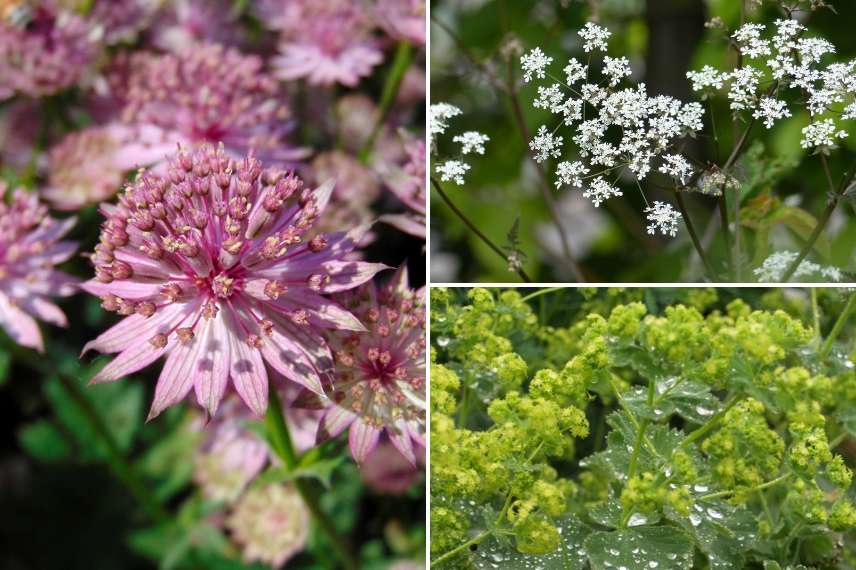
An idea for a planting combination at base of a rose: Astrantia major ‘Roma’, Anthriscus sylvestris ‘Ravenswing’ and Alchemilla mollis
To add structure and lightness to an English-style mixed border
Astrantia is one of the centrepieces of the English-style mixed border. Across the Channel, no cottage or manor garden is complete without Astrantia! Some will say that this plant of dappled shade and fresh soil is well suited to the level of sunlight and humidity typical of climates across the Channel… No doubt. That said, it’s beautiful, subtle and relatively simple to achieve: plant Astrantia in clumps of three young plants, alongside Campanula persicifolia or lactiflora, columbines, astilbes, monardas and hardy geraniums.
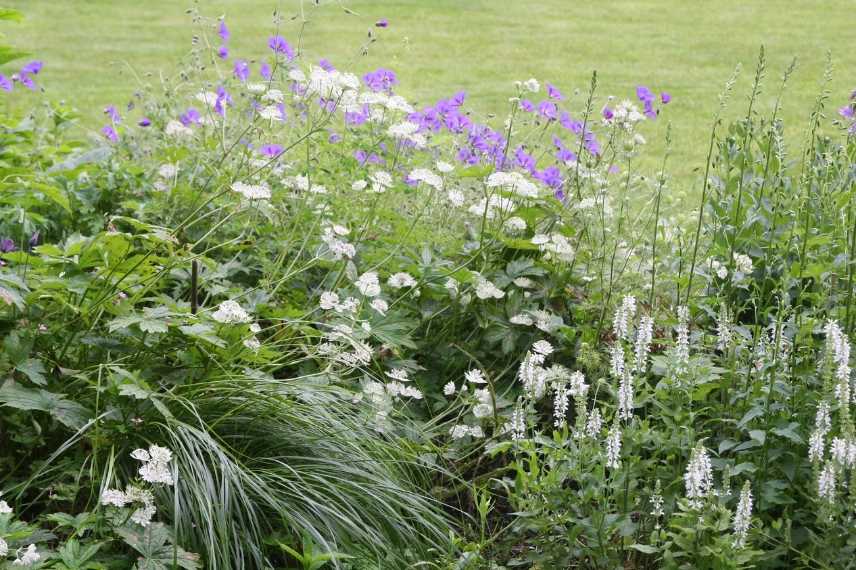
An example of an association in a mixed border: Astrantia major ‘Shaggy’, hardy geranium (‘Azur Rush’, ‘Ice Blue’, ‘Brookside’, etc), Salvia nemorosa ‘Schneehügel’ and Campanula persicifolia in bud
White garden for shade
White varieties with grey-tinged reflections, such as Astrantia major ‘Alba’ or Buckland, elegantly complement a white garden and pair perfectly with the near-metallic hues of hostas or willows with grey foliage.
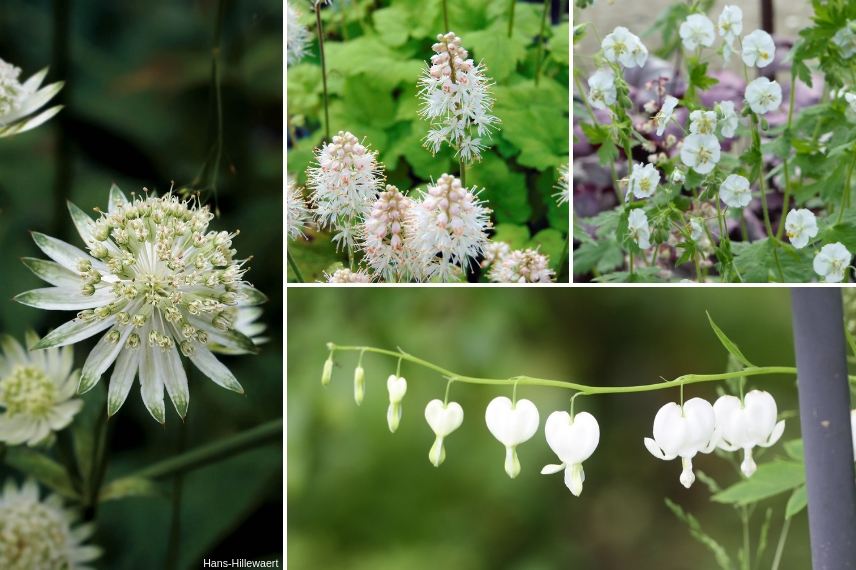
An idea for a pairing in a white shady garden: Astrantia major ‘Alba’, Tiarella cordifolia ‘Moorgrun’, Geranium phaeum ‘Album’, Dicentra spectabilis ‘Alba’ and add a few touches of Dicentra formosa ‘Aurora’ to the superb graphic green foliage dusted with grey
Crowning a meadow garden
A major trend in contemporary gardening is to combine grasses and meadow flowers, as popularised by the renowned Dutch plantsman Piet Oudolf: on a base of grasses that form the backbone of a border, insert splashes of colour with vigorous perennials, each planted in large numbers, in slightly muted tones. You can thus create beautiful harmonies with white or pink astrantias paired with perennials with blue or mauve flowers.
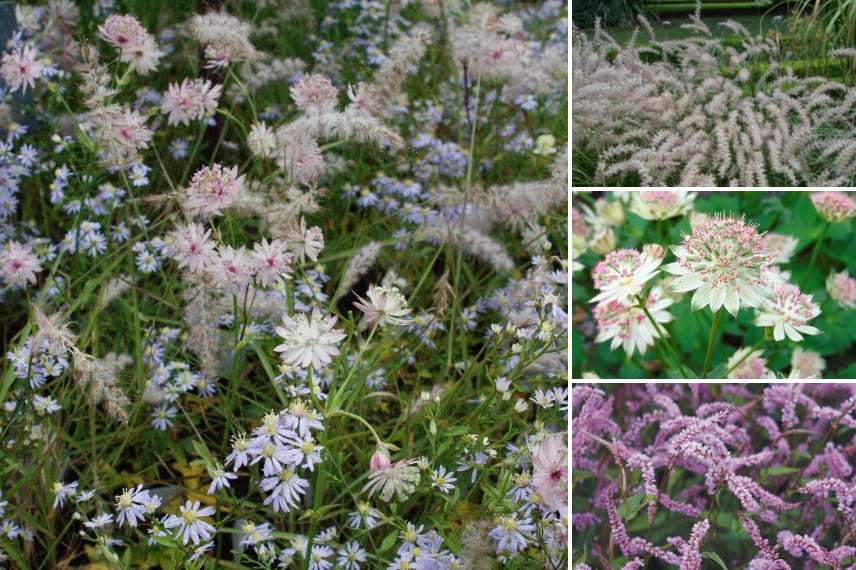
An example of a naturalistic planting: Astrantia major ‘Buckland’, Pennisetum orientale, Aster cordifolius ‘Photograph’ and Persicaria amplexicaulis ‘Pink Elephant’
As a counterpoint to a flowerbed of contrasting colours
Astrantia is not reserved for pastel-coloured borders… You can use the vivid colours of varieties with purple flowers as a complement and counterpoint to a dark or colourful border.
You can pair Astrantia major ‘Moulin Rouge’ with purple foliage of Bishop dahlias, a Cimicifuga atropurpurea or a contorted hazel. Colours are especially brought out when paired with a touch of yellow, such as ranunculus.
White varieties of Astrantia are also paired with purple flowers, such as echinaceas or knautias.
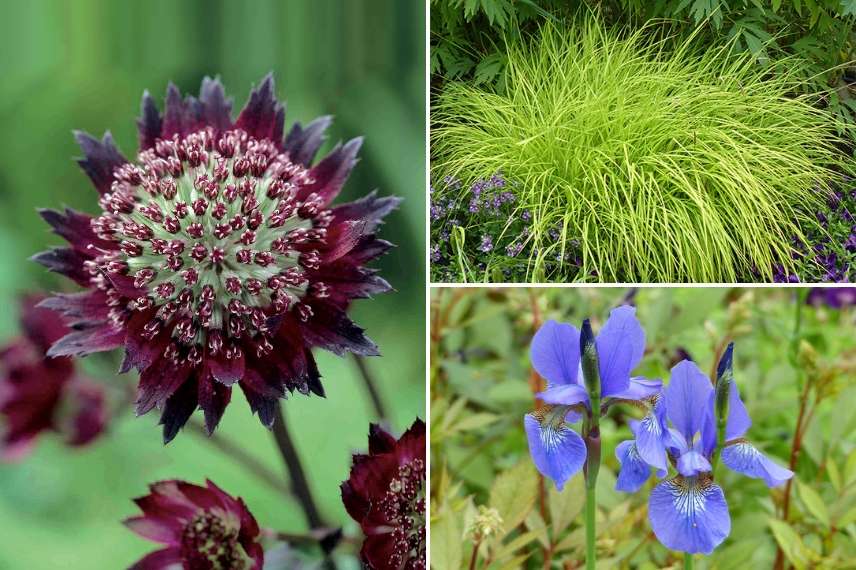
An example of a contrasting combination: Astrantia major ‘Moulin Rouge’, Carex elata ‘Aurea’ and Iris sibirica ‘Ceasar’s Brother’
Pair your Astrantias with other Astrantias!
Mass plantings of astrantia are fashionable: plant two or three varieties, each in a group of 5 to 10 plants, combining varieties of different heights and colours (white and/or pink and/or purple), spacing plants about 40 centimetres apart. Result will be beautiful, virtually no maintenance: you only need to mow once, over dry foliage, in late autumn or early spring.
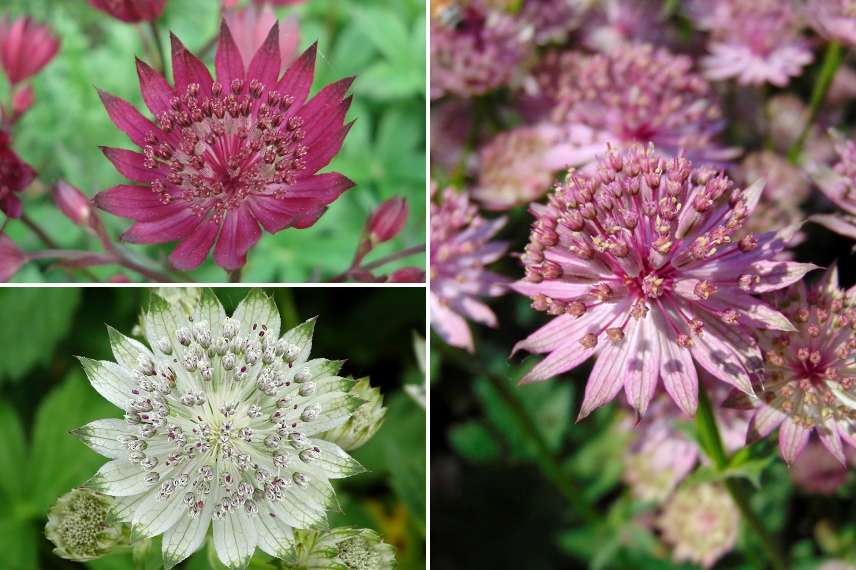
An example of combining Astrantia in several colours: Astrantia ‘Ruby Wedding’, ‘Shaggy’ and ‘Roma’
- Subscribe!
- Contents
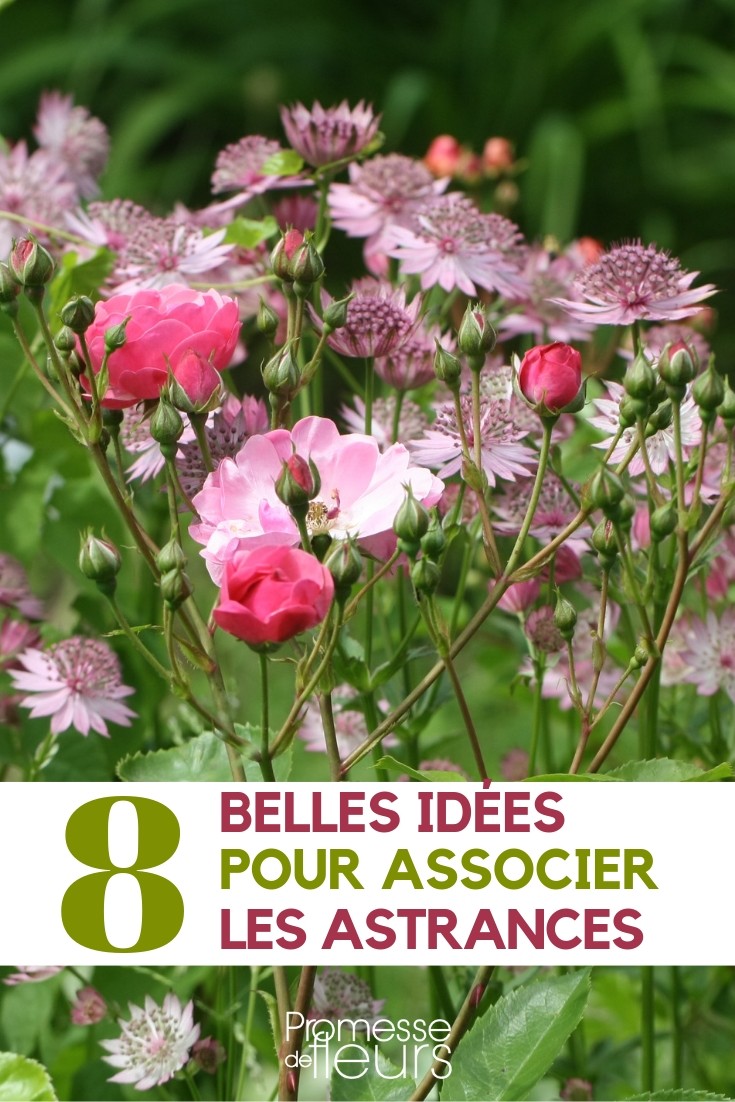































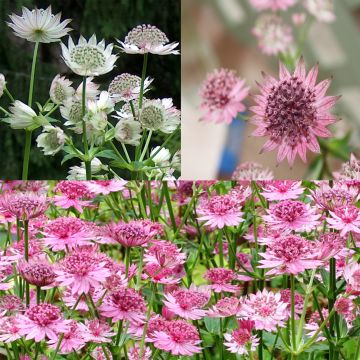
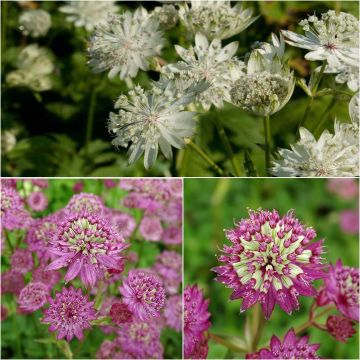
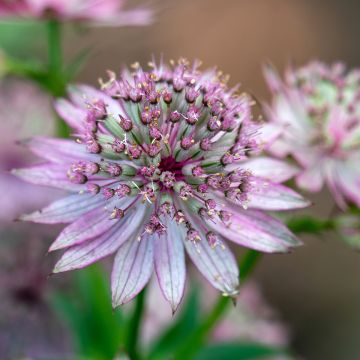
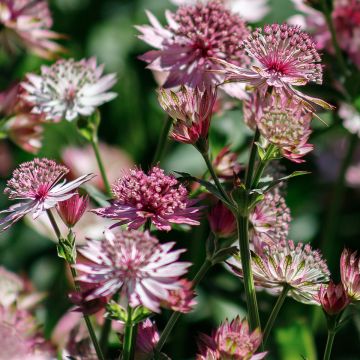

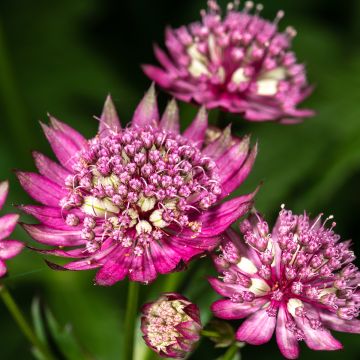
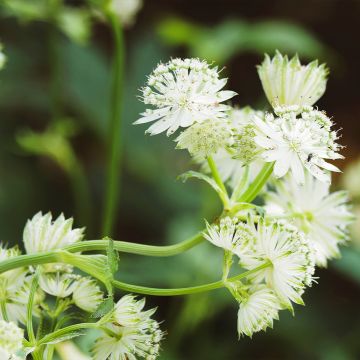
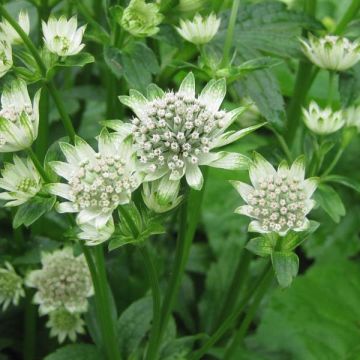
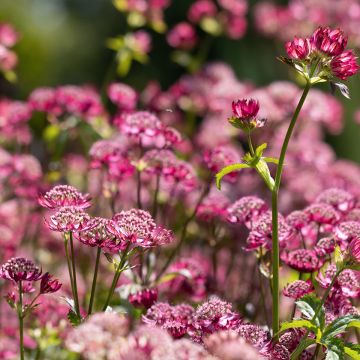
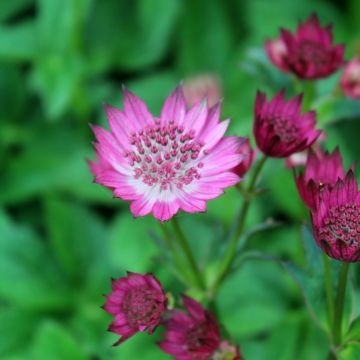
Comments